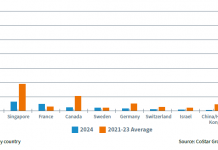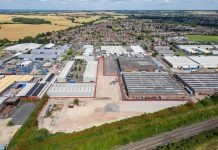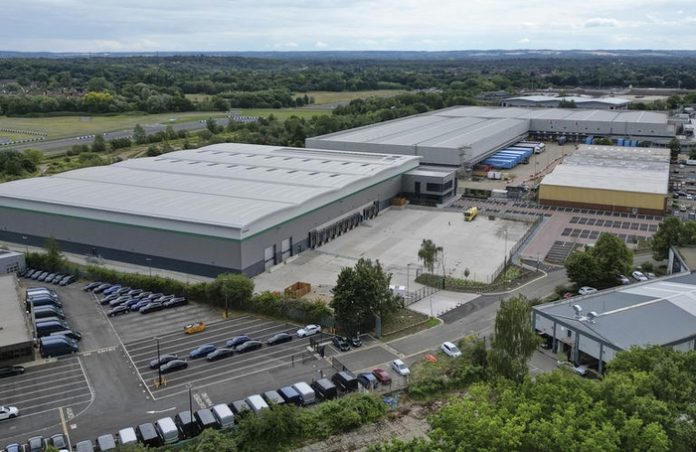Despite the challenges of high land prices and a shortage of available sites, there is an appetite to refresh existing stock to meet occupier demand for. Georgia Pirbhai, Colliers’ Industrial & Logistics Director explores a sector at a time of renewal.
The capital’s industrial and logistics stock has been going through a period of shrinkage then rebirth – with 64m sq ft (six million sqm) of capacity lost in the last 20 years. However, much of this was arguably redundant and not fit for purpose both in terms of output and efficacy as well as lacking the facilities desired by a modern workforce. By the same token, the population has grown by 32% in that time, leaving businesses grappling with the issue of how best to service an increased customer base from a reducing real estate footprint.
Outmoded space has been selectively replaced by flagship projects such as Albert Island, just north of Woolwich, which will provide 750,000+ sq ft of new floorspace including last-mile logistics and the first new shipyard to be built in London in more than a century, its predecessor and neighbour being the King George V Dock opened in 1921.
Colliers’ new Industrial Market Pulse provides key intel on the latest trends, deals and other aspects of all significant UK markets.
Next generation speculative builds
With an obvious scarcity of land but increasingly sophisticated building techniques, developers are looking at multi-floor solutions, such as SEGRO’s the state-of-the-art V-Park Grand Union in Park Royal. Providing 134,500 sq ft over six storeys complete with a solar paneled roof terrace, break-out areas and dedicated social areas. V-Park is light years away from historic lock-ups, grimy factories and manufacturing space of old.
Amid claims of an industrial desert across the wider south east since 2019, there has been a significant increase in speculative development, this was exacerbated by Covid-19, which saw online retailers taking record levels of space. Since then, a stream of new schemes sprang up in the following years, such as Panattoni’s 452,469 sq ft last-mile logistics development in Burgess Hill, Sussex and Chancerygate’s speculative build of 105,000 sq ft Grade A in Southwater, near Crawley. This has resulted in a 7.2% year-on-year increase in supply in 2024, with a further 3.2 million sq ft currently under construction as of January 2025.
February 2025 saw breaking ground on the £135 million, 33-acre TN2 Gateway in Tunbridge Wells, creating 500,000 sq ft of warehouse and ancillary office space in a historically undersupplied area.
Other south east speculative Grade A builds include:
- MLI1, Mitcham, south London – 300,000 sq ft
- Panattoni Park, Crawley – 200,000 sq ft
- Prologis Brooklands DC1 – 122,000 sq ft
- Prologis Park, Hemel Hempstead 198,000 sq ft
- Audio Park in Southwater, near Horsham – 103,000 sq ft
Take-up and demand – a transitionary phase?
Although 2024 big box take-up was 17% down y-o-y, the continual withdrawal of outmoded stock plus a gradual flight to quality underpinned by operational efficiency drives and regulation in the form of MEES will result in a marked improvement. Rising operational costs resulted in indecision on the part of some firms in terms of relocation, but notable transactions included:
- Brakes Foodservice 465,000 sq ft at Hemel 465, Hemel Hempstead
- JD Retail 277,000 at Oxw277, Dunstable
- Food Service Logistics 161,000 sq ft at Hemel 161, Hemel Hempstead
- Kegstar 147,000 sq ft at MK147, Milton Keynes
- Tramo Group 106,000 sq ft G-Park, Biggleswade
- Carlsberg Marston 105,000 sq ft at Total Park, Bedford
Rental rates remain buoyant, with 2024 average increases of 6.2% in the south east and 5.6% in the capital, with further rises expected in 2025 as demand for space is expected to increase as the year progresses.
Unlocking land for logistics
Although the Government’s industrial strategy focuses on improving infrastructure, driving innovation, and supporting industries such as manufacturing, technology, and logistics, there is no specific provision or mention of the commercial space needed for any of this to happen.
Furthermore, with government house building targets under December 2024’s revised National Planning Policy Framework for London set at 87,992 units per annum and Angela Rayner’s pledge to unlock sites earmarked for housing, new industrial land will be at a premium.
Allied to this, optimism that grey belt classification would solve land optimisation issues was tempered when Lord Moylan, chair of the House of Lords’ Built Environment committee, said: “We do not believe that it is likely to have any significant or lasting impact on planning decision-making.” Grey belt sites will be selected via Local Plan on a case-by-case basis, so those waiting for swathes of land to be designated for development will be disappointed.
Time will tell how much precious appropriate land the industrial and logistics sector can secure amid acute and multiple pressures. However, it is arguable politicians and civil servants need to not only consider commercial, industrial and logistics space when drafting policy statements, but back it up with consistent and effective policies and calls to action in order to safeguard economic capability into the future.




















